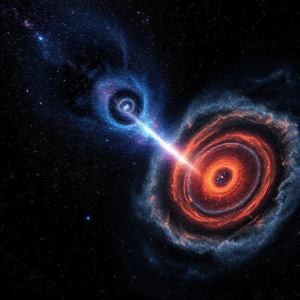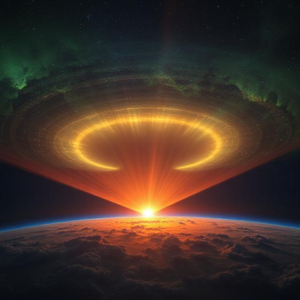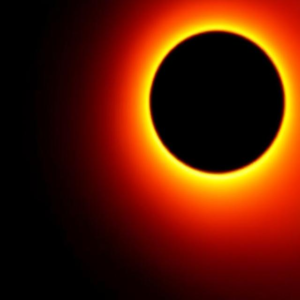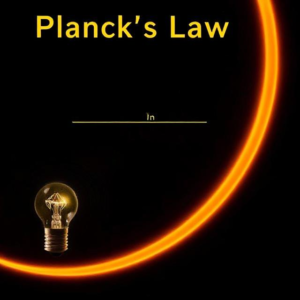Dark Energy and Dark Matter:
Both dark energy and dark matter are mysterious phenomena in the universe. Although they make up most of the universe’s total energy and matter, we can’t see them directly, and their properties remain largely unknown. Let’s break them down to understand them better!

1. What is Dark Matter?
Dark matter is a form of matter that doesn’t emit light, heat, or any kind of radiation that we can detect with telescopes. Even though it’s invisible, scientists are pretty sure dark matter exists because of the effects it has on things we can see.
How do we know dark matter exists?
- Gravitational Effects: Scientists observed that galaxies were spinning faster than they should be based on the amount of visible matter (stars, gas, etc.) they could see. According to gravity, the outer parts of galaxies should be moving slower, but they aren’t. This suggests that there is something else, something invisible, providing extra gravitational pull — this is thought to be dark matter.
- Galaxy Clusters: When scientists observe galaxy clusters, they find that the total mass of visible matter (like stars and gas) doesn’t account for the amount of gravity needed to hold the cluster together. This extra mass is believed to be dark matter.
What does dark matter do?
- Dark matter holds galaxies and galaxy clusters together. Without it, galaxies would fly apart because there wouldn’t be enough gravity to keep everything bound together.
- It interacts with regular matter (the stuff we can see) through gravity, but not through light, which is why we can’t see it.
What is dark matter made of?
- We don’t know exactly what dark matter is made of, but scientists think it could be made of particles that don’t interact with light or other forms of radiation. These particles are called WIMPs (Weakly Interacting Massive Particles), but this is still just a theory.
In Summary:
- Invisible and does not emit light.
- Makes up about 27% of the universe.
- Important for gravity: It helps keep galaxies and clusters together.
2. What is Dark Energy?
Dark energy is a mysterious force that seems to be causing the acceleration of the expansion of the universe. In simple terms, while gravity pulls things together, dark energy is pushing things apart. It is thought to make up about 68% of the universe.
How do we know dark energy exists?
- Accelerating Universe: In the 1990s, astronomers discovered that galaxies are moving away from each other faster and faster. This was surprising because, according to the laws of physics, gravity should be pulling them together, slowing their motion. Instead, the expansion of the universe is speeding up, and something mysterious must be causing this.
- This acceleration of the universe’s expansion is attributed to dark energy, a force that is opposite to gravity. While gravity tries to pull things together, dark energy causes things to push apart.
What does dark energy do?
- Dark energy is responsible for the accelerating expansion of the universe. As the universe continues to expand, dark energy causes the expansion to speed up.
- It makes up about 68% of the universe, meaning it’s the dominant force affecting the large-scale structure of the cosmos.
What is dark energy?
- We don’t really know what dark energy is. It’s a force or energy that exists throughout space, but we can’t detect it directly. Some scientists believe dark energy could be linked to the energy inherent in empty space itself, known as the cosmological constant, but its true nature remains a mystery.
In Summary:
- Invisible and responsible for the accelerating expansion of the universe.
- Makes up about 68% of the universe.
- Pushes galaxies apart and speeds up the expansion of space.
How Do Dark Matter and Dark Energy Differ?
| Feature | Dark Matter | Dark Energy |
|---|---|---|
| What is it? | Matter that doesn’t emit or interact with light. | A mysterious force causing the acceleration of the universe’s expansion. |
| What does it do? | Provides extra gravity that holds galaxies and clusters together. | Causes galaxies to move apart faster, accelerating the universe’s expansion. |
| How do we detect it? | By observing its gravitational effects on visible matter. | By observing the accelerating expansion of the universe. |
| What’s it made of? | Possibly made of particles that don’t interact with light. | Unknown, but possibly linked to vacuum energy or cosmological constant. |
| Percentage of universe | Makes up about 27% of the universe. | Makes up about 68% of the universe. |
Why Are Dark Matter and Dark Energy Important?
- Dark Matter helps us understand how galaxies are formed and how they stay together. Without dark matter, galaxies and clusters would not have the gravitational pull needed to maintain their structure.
- Dark Energy is crucial to understanding the future of the universe. If dark energy continues to dominate, it could lead to an ever-accelerating expansion of the universe, possibly causing galaxies to become so far apart that they are no longer visible to each other in the distant future.
Summary:
- Dark Matter:
- Invisible matter that makes up 27% of the universe.
- It helps to hold galaxies together by providing additional gravity.
- We can’t see it, but we can detect its gravitational effects.
- Dark Energy:
- A mysterious force that makes up 68% of the universe.
- It causes the acceleration of the expansion of the universe.
- It pushes galaxies apart and is the dominant force affecting the universe’s future.
Even though dark matter and dark energy are essential to understanding the universe, we still don’t fully understand them. They remain one of the biggest mysteries in modern science.











